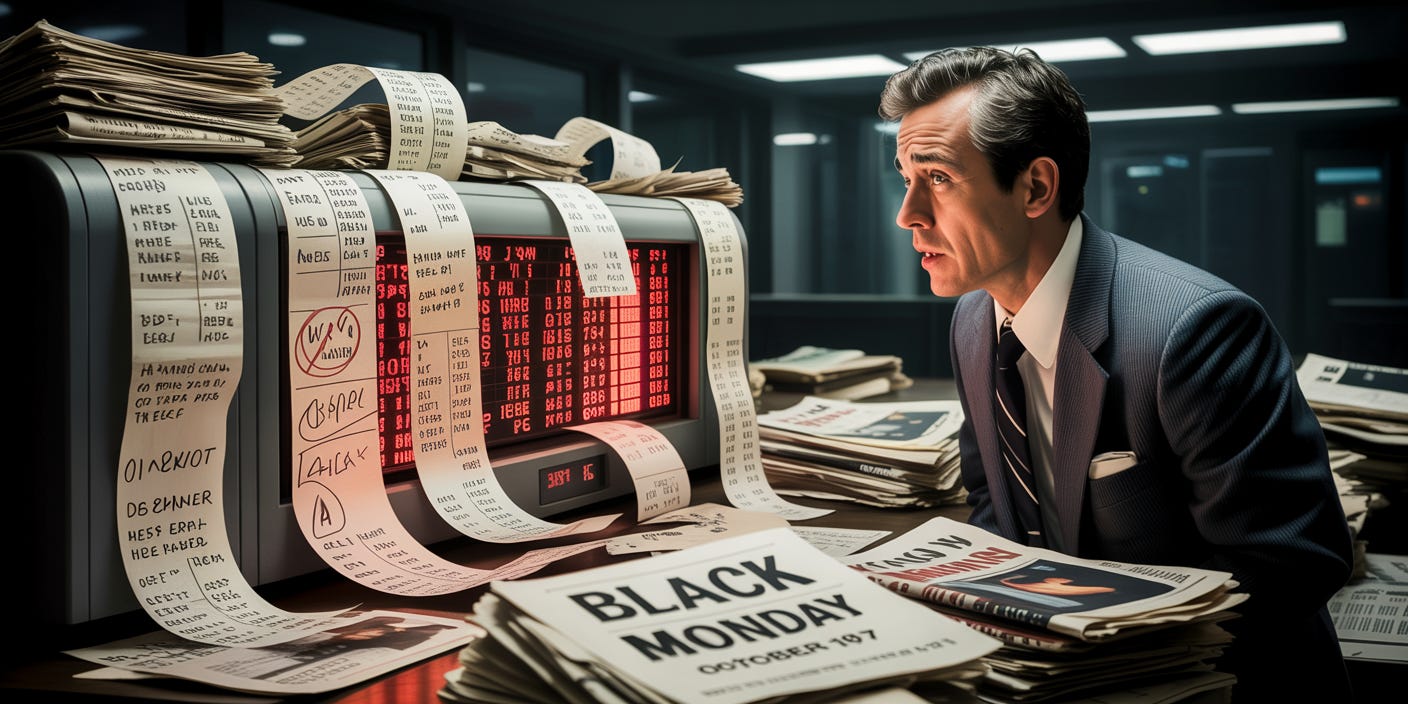Black Monday Anniversary: Will it Happen Again?
Today marks 38 years since Black Monday. The day the stock market dropped 22.6% in a single afternoon. If you’re old enough to remember October 19, 1987, you probably remember the panic.
Every year around this time, clickbait posts and articles pop up asking “could it happen again? The short answer is no.
We Installed Emergency Brakes
After 1987, regulators did something smart: they installed circuit breakers in the stock market. Think of them like emergency stops on a runaway train.
Here’s how they work: if the market drops 7% in a day, trading pauses for 15 minutes. If it drops 13%, another pause. If it somehow hits 20% down, the market closes for the day.
Why does this help? Because the 1987 crash was partly fueled by panic. People saw prices falling, panicked, sold their stocks, which made prices fall more, which made more people panic. It was a vicious cycle that fed on itself.
Circuit breakers force everyone to take a breath. That 15-minute pause gives traders time to think instead of just react. It’s not foolproof, but it works.
We saw this in March 2020 when COVID hit. The circuit breakers triggered multiple times, but we never saw a single 20%+ drop like 1987. The worst day was “only” 12.9% down.
The Computers Aren’t Quite as Dumb Anymore
One of the weird causes of Black Monday was something called “portfolio insurance.” Basically, big investors programmed their computers to automatically sell stocks if prices started falling.
The problem? When the market started dropping, all these computers started selling at the same time. This triggered more selling, which triggered more computers to sell, which... you get the idea.
Today’s trading algorithms are more sophisticated.
Information Moves Faster
In 1987, if you wanted to know what was happening in the market, you watched CNBC or called your broker. There was a lag. That information lag made the panic worse.
Today, everyone has a supercomputer in their pocket. Market data is instant. News is instant. This doesn’t prevent crashes, but it does mean they’re less likely to be driven by pure confusion and information gaps.
Will Black Monday Repeat?
Just because we won’t see Black Monday Part II doesn’t mean markets are safe. They’re not. Severe crashes can and will still happen:
We still have systemic risks we don’t fully understand
New technologies create new vulnerabilities
Human psychology hasn’t changed. People still panic
Black swan events can still shock the system
The difference is that a 22% single-day drop is now extremely unlikely. Future crashes will probably be slower burns or spread across multiple days, giving people more time to react.
What This Means for You
Remember that markets go down. Sometimes a lot. Sometimes fast. That’s the deal you make when you invest.
On this 38th anniversary of Black Monday, the real lesson isn’t about what happened that day. It’s about what we learned from it and how we built a more resilient system.
So no, Black Monday won’t repeat in its original form, but the logic of that event which was forced selling meets thin liquidity is alive and well.
The 1987 crash was a software bug in the market’s operating system.
We fixed the code, but not the logic.


